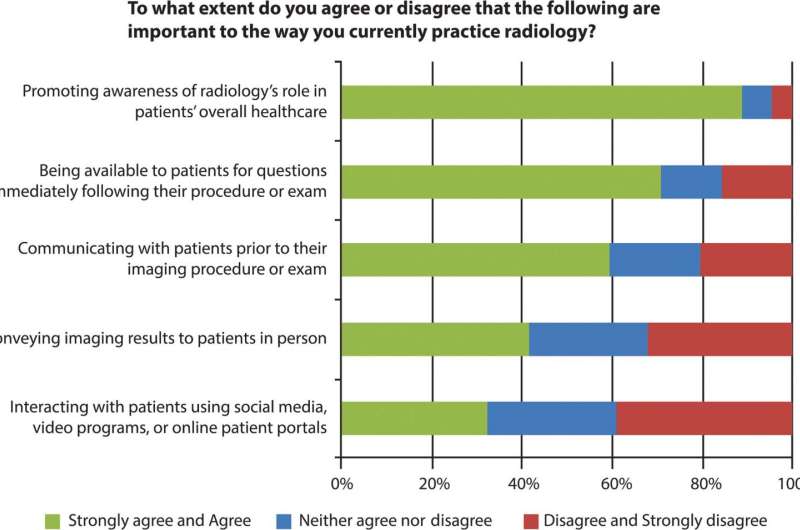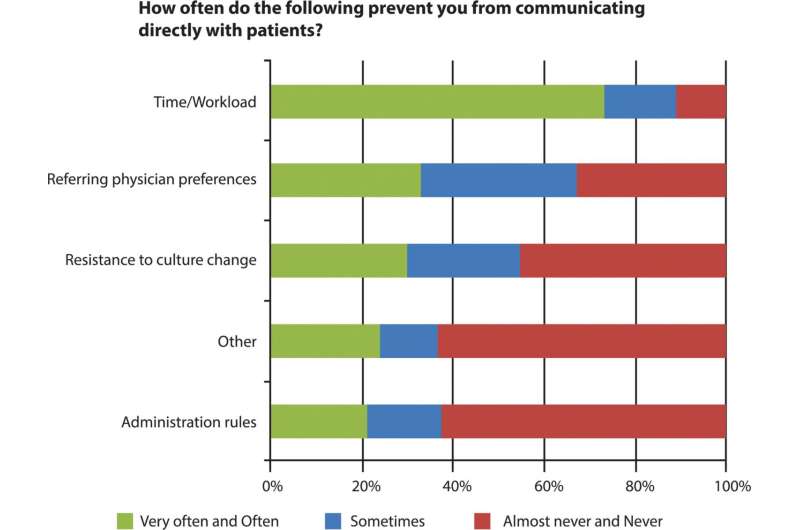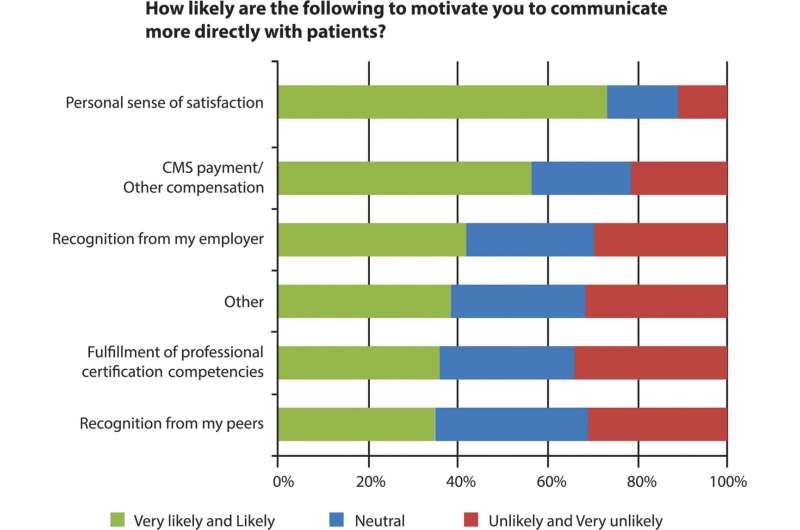Radiologists seek greater involvement in patient care

Despite constraints of time and workload, radiologists are looking for ways to become more directly involved in the care of their patients, according to the findings of a recent survey of radiologists, published online in the journal Radiology.
Communication between patients and radiologists is a key element of patient-centered care, a major focus of the Radiological Society of North America (RSNA) for more than a decade. Such care, which focuses on the patient's needs and preferences, is fundamental to radiology's shift from a volume- to a value-based system.
Engaging with patients via social media and moving radiology reading rooms into the clinic present opportunities to help bridge the divide between radiologists and patients, researchers said.
"Patient-centered radiology is a lot more than giving results to patients," said study lead author Jennifer L. Kemp, M.D., from Diversified Radiology in Denver, Colo. "There are many other things we can do within the continuum of patient care, from scheduling all the way through billing, to improve the patient's experience."
In the radiology suite, a discussion of the appropriateness of the test, an explanation of the exam from the technologist and user-friendly radiology reports are key parts of this care continuum, added Dr. Kemp.

"It's rare for any practice to have full control of all the different aspects of care, but if we can chip away at some of those things, we can help make our specialty more patient-centered," she said.
Dr. Kemp and colleagues from the RSNA Patient-Centered Radiology Steering Committee surveyed RSNA members on various aspects of patient-centered radiology. Of the 694 respondents, 611, or 89 percent, agreed that promoting awareness of radiology's role in patients' overall healthcare is important to how they practice. However, only 31 percent of radiology practices regularly promote awareness of radiology's role in patients' overall healthcare. Only 21 percent of respondents said their radiology practices commonly deliver imaging results to patients in person.
"These results show that in radiology, our attitude has shifted but our practices are not entirely there yet," Dr. Kemp said. "We believe in the ideas, but we're encountering obstacles in how to implement them."
The survey showed that time and workload are by far the biggest barriers to wholly patient-centered care. The majority of respondents—421, or 73 percent—reported that time and/or workload frequently prevented them from communicating directly with patients, which potentially hampers both optimal patient-centered care and radiologist satisfaction.

Dr. Kemp noted that social media offers busy radiology practices one avenue to direct communication with patients.
"Social media is where our patients are these days and where they get a lot of their medical information," she said. "Using social media to interact with patients regarding medical imaging procedures does not take a lot of time for radiologists and can potentially reach a lot of people."
Radiologists could also consider better integration into clinical practice settings by moving radiology reading rooms into patient clinics. Studies have shown that this change helps improve patient-radiologist communication.
"The key takeaways here are that radiologists are in agreement that patient-centered care is always our goal and that our efforts should continue to focus on how best to achieve that goal," Dr. Kemp said.
More information: "Patient-centered Radiology: Where Are we, Where Do We Want to Be, and How Do We Get There?" Radiology, 2017.
















